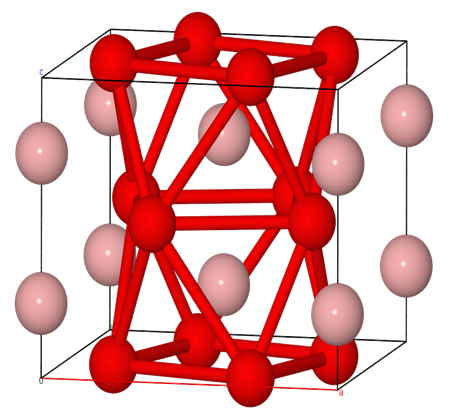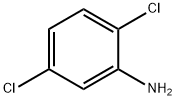2,5-Dichloroaniline: Electrochemical Synthesis and Detection Method
Mar 25,2024
General Description
The electrochemical synthesis of 2,5-Dichloroaniline offers an environmentally friendly alternative to traditional methods by utilizing the cathodic reduction of 2,5-dichloronitrobenzene. Two procedures were explored, with the two-phase system yielding high yields of the free amine in one step. Optimal conditions were determined, leading to high yields exceeding 80%, and various parameters such as cathode material, solvents, and concentrations were investigated for their effect on the synthesis process. This method shows promise for producing both salt and free base forms of 2,5-Dichloroaniline. In a separate study, the detection method for 2,5-Dichloroaniline in estuarine water using mass spectrometry and selected ion monitoring was detailed. Despite variations in geographical concentrations, the river Elbe was identified as a significant contamination source. Limited toxicological data exist for this compound, but its potential bioaccumulation and transformation into toxic metabolites in marine life raise concerns about its impact on the North Sea ecosystem.
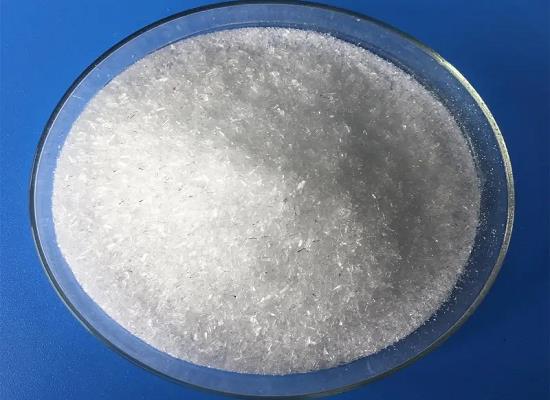
Figure 1. 2,5-Dichloroaniline
Electrochemical Synthesis
Electrochemical synthesis of 2,5-Dichloroaniline is a process of significant interest due to the environmental concerns associated with traditional reduction methods. This method involves the cathodic reduction of 2,5-dichloronitrobenzene (2,5-DCNB) to produce 2,5-Dichloroaniline, an important intermediate in pesticide synthesis. Two different procedures were explored for the electrochemical reduction of 2,5-DCNB. The first procedure involved the classical method using sulfuric acid, resulting in the formation of the amine in salt form. The second procedure, a two-phase system, allowed for the direct preparation of the free amine in one step. Various experiments were conducted to optimize the conditions for the electrochemical synthesis. It was found that using a lead cathode in an aqueous-ethanolic solution of sulfuric acid yielded reproducibly high 2,5-Dichloroaniline yields. The addition of zinc sulfate significantly increased the yield of 2,5-Dichloroaniline, and the presence of certain solvents like aliphatic alcohol improved the reaction efficiency. The study also investigated the effect of parameters such as cathode material, organic solvent, 2,5-DCNB concentration, sulfuric acid concentration, reaction temperature, and electricity passed on the yield of 2,5-Dichloroaniline. Optimal conditions were determined, leading to high yields of 2,5-DCA with good current efficiency. Furthermore, a two-phase system using a phosphate buffer solution and toluene as the solvent was explored, resulting in a yield of 2,5-DCA of 80%. Overall, the electrochemical synthesis of 2,5-Dichloroaniline offers a more environmentally friendly approach compared to traditional methods, with both salt and free base forms of the compound achievable with yields exceeding 80%. Optimization of reaction conditions is crucial in maximizing the efficiency of the synthesis process. 1
Detection Method
A study conducted in the estuarine water of the river Elbe aimed to detect and quantify the presence of 2,5-dichloroaniline, a toxic xenobiotic with potential ecosystem threats, in the North Sea. The detection method involved selected ion monitoring routine using mass spectrometry, confirming 2,5-dichloroaniline's presence by comparing retention times with standard compounds. Despite a molecular ion measurement slightly higher than the theoretical value, accurate identification was achieved. Though recovery rates were determined for accuracy, they weren't used to correct concentrations. 2,5-Dichloroaniline concentrations varied geographically, peaking at 8.5 µg/L in the river Elbe estuary and decreasing to 0.01 µg/L in the northern German Bight stations, suggesting the Elbe as a significant contamination source in the North Sea. Limited toxicological data exist for 2,5-Dichloroaniline, with studies showing similar toxic effects to other derivatives on fish and marine organisms. Stability under marine conditions was noted, with potential sorption to particles and chemical binding observed. Bioconcentration factors indicated some bioaccumulation potential. Transformation of 2,5-Dichloroaniline into toxic metabolites in marine life was observed, hinting at a non-detoxification process. Concerns over the unknown effects on North Sea wildlife and ecosystems highlight the importance of further research and monitoring. Understanding the toxic potential of dichloroaniline derivatives is crucial for addressing environmental risks posed by these compounds. 2
Reference
1. Islamgulova VR, Tomilov AP, Akhmerova SG, Gil'mkhanova VT, Sapozhnikov YE. Electrochemical Synthesis of 2,5-Dichloroaniline. Russian Journal of Applied Chemistry. 2003; 76(7): 1076-1078.
2. Bester K. Results of non target screening of lipophilic organic pollutants in the German Bight III: Identification and quantification of 2,5-dichloroaniline. Chemosphere. 1998; 23(1): 1973-1983.
- Related articles
- Related Qustion
- 2,5-Dichloroaniline: applications and safety Oct 25, 2023
2,5-Dichloroaniline has various applications but can be a source of toxic chemicals in paints, while also showing promise in antimicrobial agent synthesis.
- 2,5-Dichloroaniline - Pigment Uses, Synthesis etc. Nov 23, 2021
2,5-Dichloroaniline is used as an intermediate for dyes and pigments, as well as for organic synthesis and the preparation of nitrogen fertilizer synergist. 2,5-dichloroaniline is an intermediate for the herbicide dicamba.
Iron boride has properties of ceramics such as high hardness, and properties of metal properties, such as thermal conductivity and electrical conductivity.....
Mar 22,2024Inorganic chemistryDistearyl thiodipropionate is synthesized through a method involving mixing, rectification, transesterification, and fractionation. It is important in antioxidant synthesis and automobile coatings.....
Mar 25,2024API2,5-Dichloroaniline
95-82-9You may like
2,5-Dichloroaniline manufacturers
- 2,5-Dichloroaniline
-
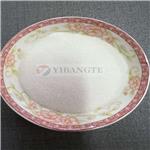
- $0.00 / 1kg
- 2023-11-04
- CAS:95-82-9
- Min. Order: 1kg
- Purity: 99%
- Supply Ability: 50000kg
- 2,5-Dichloroaniline
-
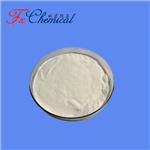
- $0.00 / 25KG
- 2023-01-14
- CAS:95-82-9
- Min. Order: 25KG
- Purity: 98%min
- Supply Ability: 30tons/month
- 2,5-Dichloroaniline
-

- $1.00 / 1kg
- 2019-07-06
- CAS:95-82-9
- Min. Order: 1kg
- Purity: 99%
- Supply Ability: Customized




